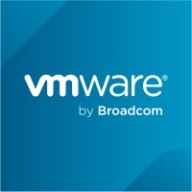

VMware Aria Automation and Turbo360 compete in the cloud management and automation space. VMware Aria Automation excels in pricing and support, while Turbo360 offers a superior investment with its comprehensive feature set.
Features: VMware Aria Automation offers robust automation tools, extensive integration capabilities, and customization options. Turbo360 provides a unified platform for Azure services, emphasizing monitoring, governance, and Azure specialization.
Ease of Deployment and Customer Service: VMware Aria Automation has a straightforward deployment model with extensive documentation and numerous support options. Turbo360 offers tailored deployment for Azure services and responsive support channels for initial setup.
Pricing and ROI: VMware Aria Automation presents competitive pricing with strong ROI through flexible subscription models. Turbo360, with a higher initial cost, offers ROI improvements through efficient Azure management.
```| Product | Market Share (%) |
|---|---|
| VMware Aria Automation | 9.4% |
| Turbo360 (Formerly Serverless360) | 0.5% |
| Other | 90.1% |

| Company Size | Count |
|---|---|
| Small Business | 32 |
| Midsize Enterprise | 24 |
| Large Enterprise | 130 |
Turbo360 (Formerly Serverless360) is an advanced Cloud Management platform that empowers you with significant Azure Cost savings and Infra Monitoring for complex Azure Environments. Our customers have experienced annual savings of up to 30% through advanced cost monitoring, granular analysis, optimization insights, and reduced incident resolution time by 80% through holistic infra monitoring across multiple Azure resources with business context. Also, our platform stands out by offering all the necessary features for incorporating FinOps practice into your organization, ensuring an accurate and granular source of truth about costs for all your stakeholders. By seamlessly offering infrastructure monitoring and cost management in one place, we aim to help maximize your ROI on Azure investments.
Our Core features:
VMware Aria Automation is a cloud management tool that allows companies to simplify their cloud experience through a modern automation platform. The solution is designed to deliver self-service clouds, multi-cloud automation with governance, and DevOps-based security and infrastructure management. It helps organizations improve IT agility, efficiency, and productivity through its various features.
VMware Aria Automation has multiple use cases that include the following:
VMware Aria Automation Features
VMware Aria Automation has various features that allow users to easily perform operations. Some of the solution's capacities include:
VMware Aria Automation Benefits
VMware Aria Automation offers its users various benefits. Some of the biggest advantages that the solution brings to companies that utilize it include:
Reviews from Real Users
Awais J., CTO/CEO at a tech services company, likes VMware Aria Automation because it saves a lot of time, provides more visibility, and has extensive automation capabilities.
An IT consultant at a government rates VMware Aria Automation highly because the product gives you flexibility to analyze and consume resources.
We monitor all Cloud Management reviews to prevent fraudulent reviews and keep review quality high. We do not post reviews by company employees or direct competitors. We validate each review for authenticity via cross-reference with LinkedIn, and personal follow-up with the reviewer when necessary.